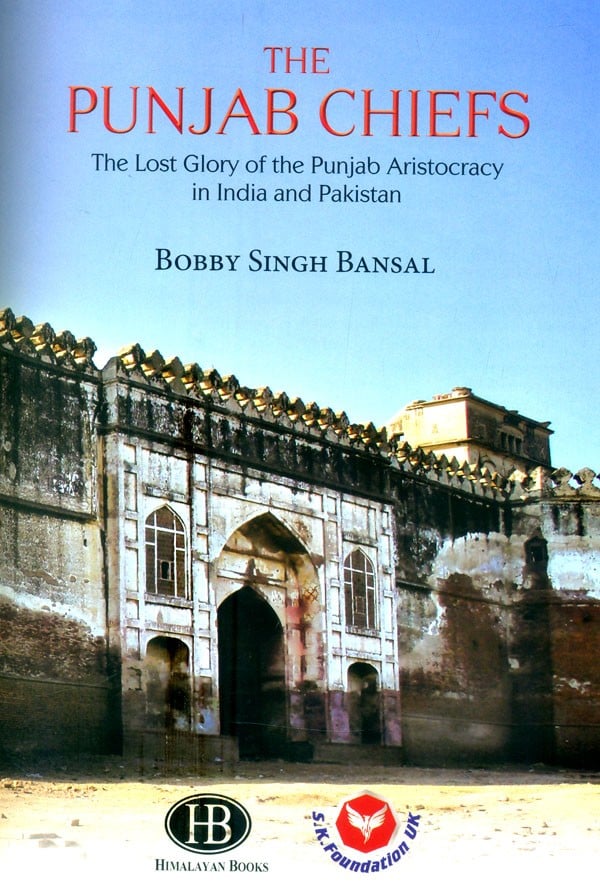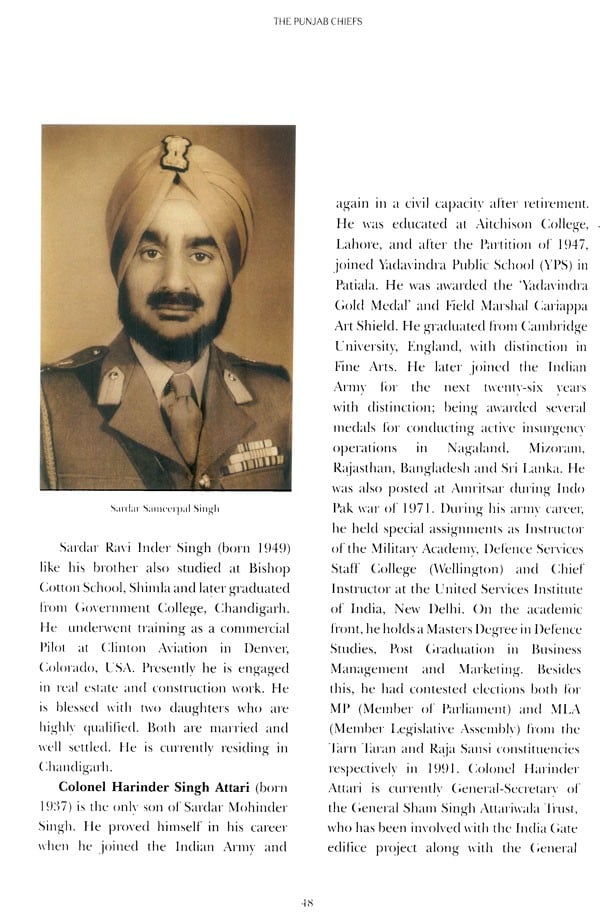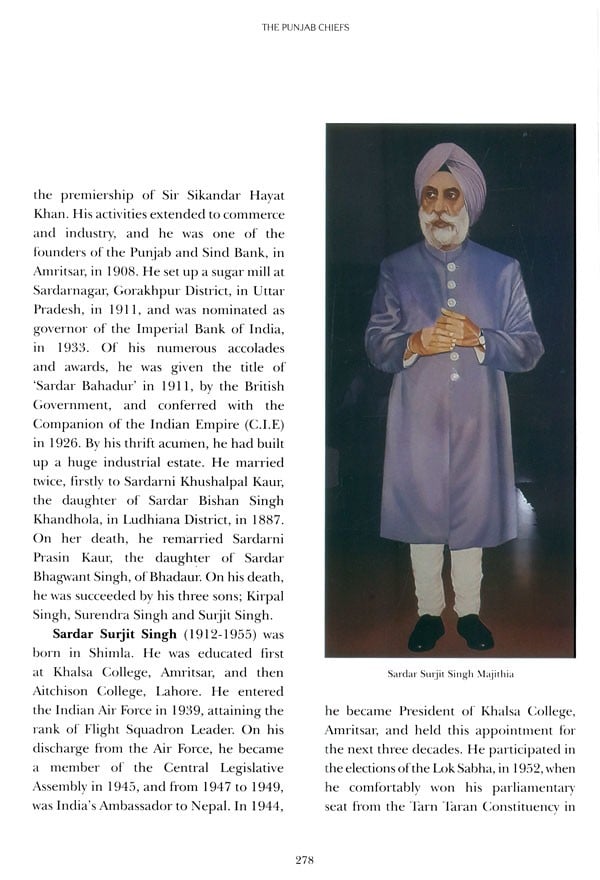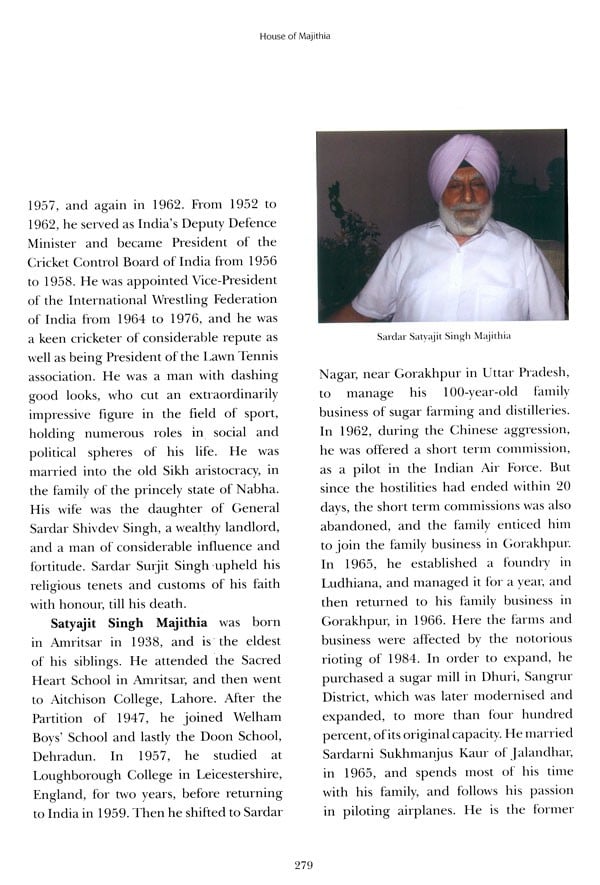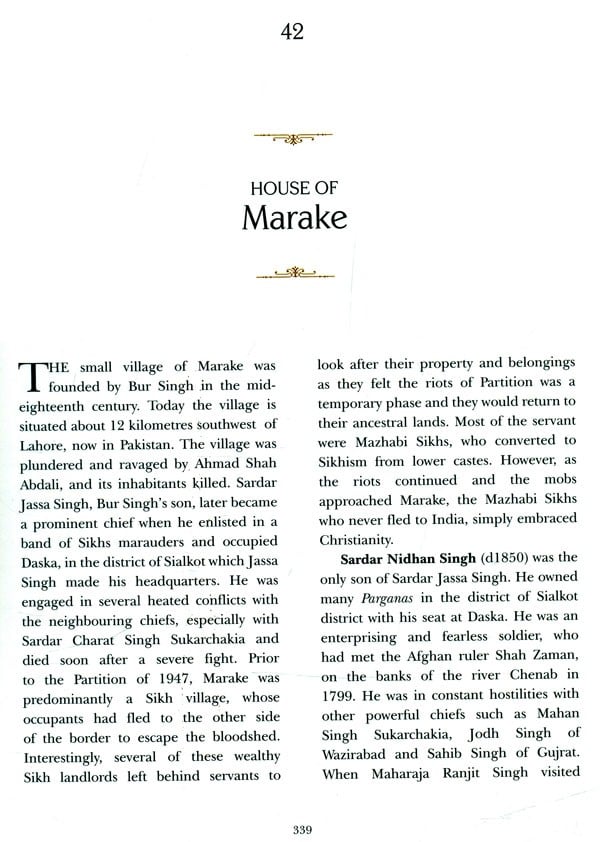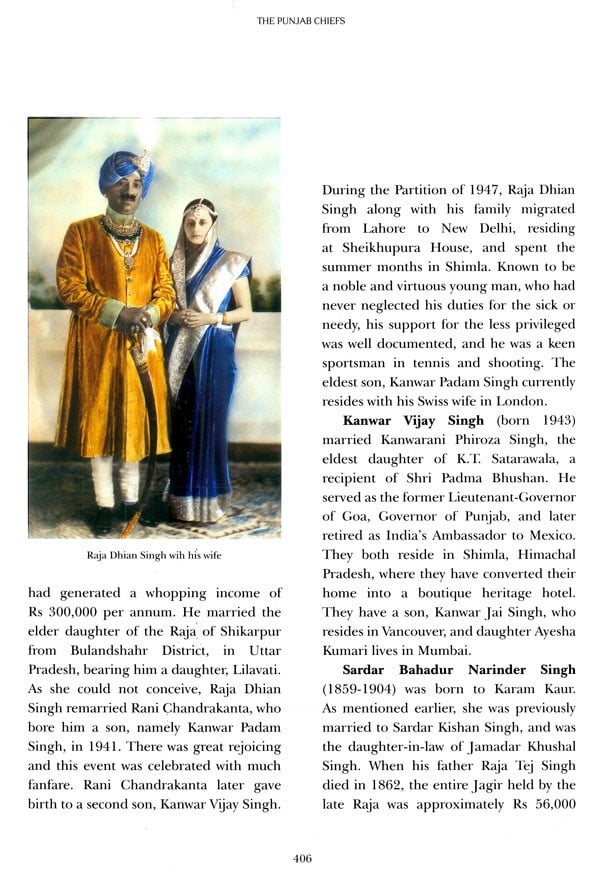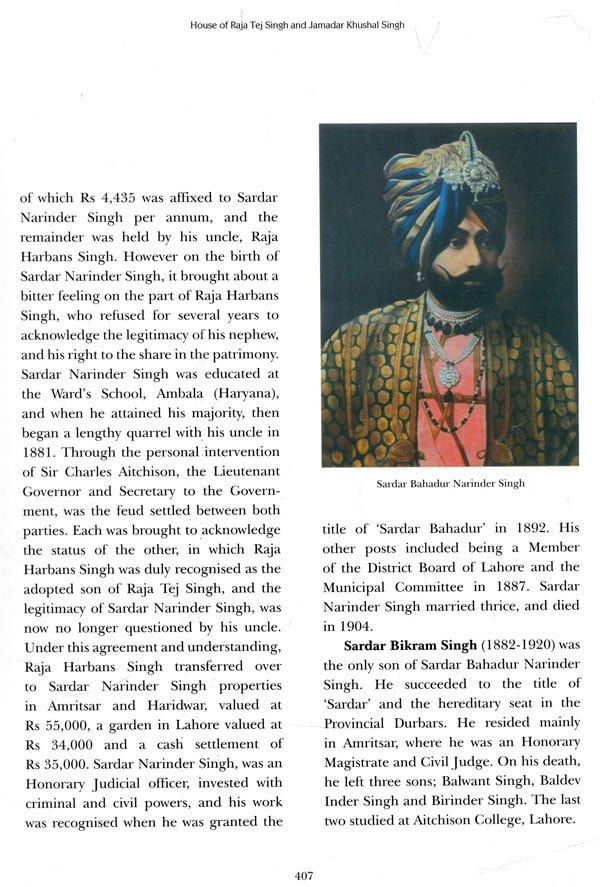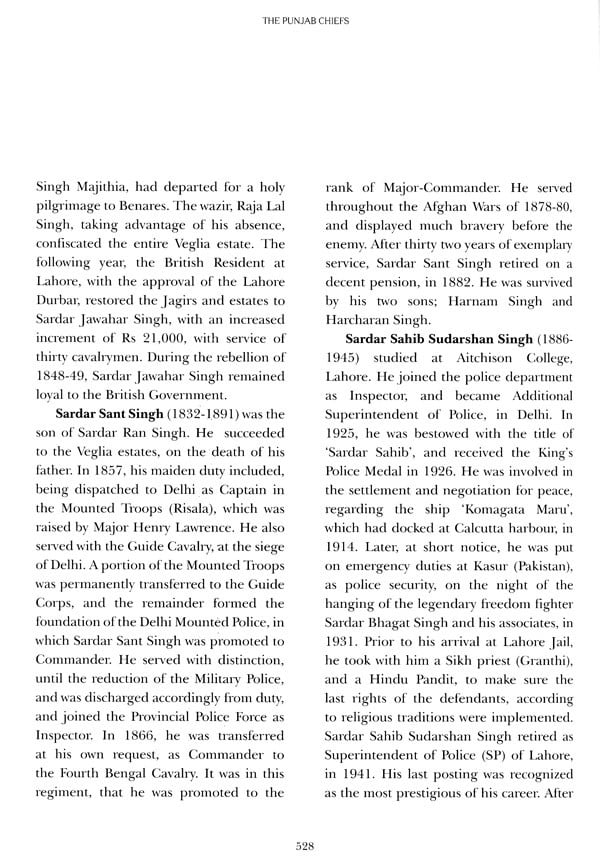
The Punjab Chiefs- The Lost Glory of the Punjab Aristocracy in India and Pakistan
Book Specification
| Item Code: | UAZ961 |
| Author: | Bobby Singh Bansal |
| Publisher: | Himalayan Books, Delhi |
| Language: | English |
| Edition: | 2020 |
| ISBN: | 9788170021223 |
| Pages: | 540 (Throughout Color and B/w Illustrations) |
| Cover: | HARDCOVER |
| Other Details | 11.00 X 9.00 inch |
| Weight | 2.64 kg |
Book Description
The voluptuous work explores the history of these numerous personalities from the landed gentry today, whose ancestors had served proudly the Sikh and British Empires in graphic details which had been completely unknown. Post the Partition of 1947, many elite families migrated to India abandoning their vast ancestral estates and so this volume covers the regions of Himachal Pradesh, Haryana, Punjab, Uttrakhand, New Delhi and Lahore, Pakistan. It brings alive the familles of Majithia, Attariwala, Nakai, Jaijee, Mokal, Bhadaur, Kalsia and even Rai Bahadur Narain Singh who had transformed Delhi in the 1930's.
The Punjab Chiefs, is a unique fully-coloured book that includes unpublished and unseen pictures that will not only be informative and inspirational, it will attract the general reader not just academically as a reference book, but as a treasure trove for all history enthus iasts wishing to indulge in capturing the lost glory of the Punjab aristocracy in India and Pakistan.
His documentary films include, the poignant The Sikhs of Kabul - A Forgotten Community' (2012), which won an award at the Guanajuato Film Festival, Mexico, 2013. This was followed by "The Road to Mandalay - The Burmese Sikhs' (2014) and Legacy of the Sikh Empire (2016). His other works include being part of the film. "The Black Prince' (2017). based on the tragic life of the last king of Punjab - Maharaja Duleep Singh. His notable works in the restoration of Hindu & Sikh structures in Pakistan have been officially recognised by institutions and government agencies in Pakistan and India, this includes one of his biggest achievments by installing a life-size statue of Maharaja Ranjit Singh in the Lahore Fort that commemorated his 180th death anniversary.
The conclusion of the Anglo-Sikh Wars (1845-1849) led to the annexation of Punjab. It marked the catastrophic end of the Sikh monarchy and the outset of British colonialism in the Punjab. Numerous ruling chiels who suddenly switched their allegiance to supporting the British in the Sikh Wars were later handsomely rewarded with pensions, titles retaiming their status and wealth. But those who fought against the British were deprived of their pride, wealth and ancestral estates. Irrespective of their former roles they became simple peasants and faded into oblivion. Furthermore, the Partition of India in 1947, dealt a severe blow to the landed gentry in western Punjab, compelling wealthy Sikh and Hindu landowners to abruptly abandon their vast ancestral estates, their relics and personal possessions. They were forced to migrate east to India virtually empty-handed, becoming mere refugees without any status.
Griffin's book was followed by an updated version by Charles Francis Massy in 1890, and again by H.D Craik in 1909. This now included leading Nawabs and Chiefs from Multan, the North West Frontier, Rawalpindi (now in Pakistan) and the Districts of Kangra, Hoshiarpur, Ludhiana, Jalandhar, Karnal, Ferozepur, Ambala and Delhi, now located largely in India. Although Griffin's edition was the inspiration behind this updated version, several families of note were vociferously cynical, if not sceptical, by Griffin's distortion of their ancestors' biographies.
**Contents and Sample Pages**
